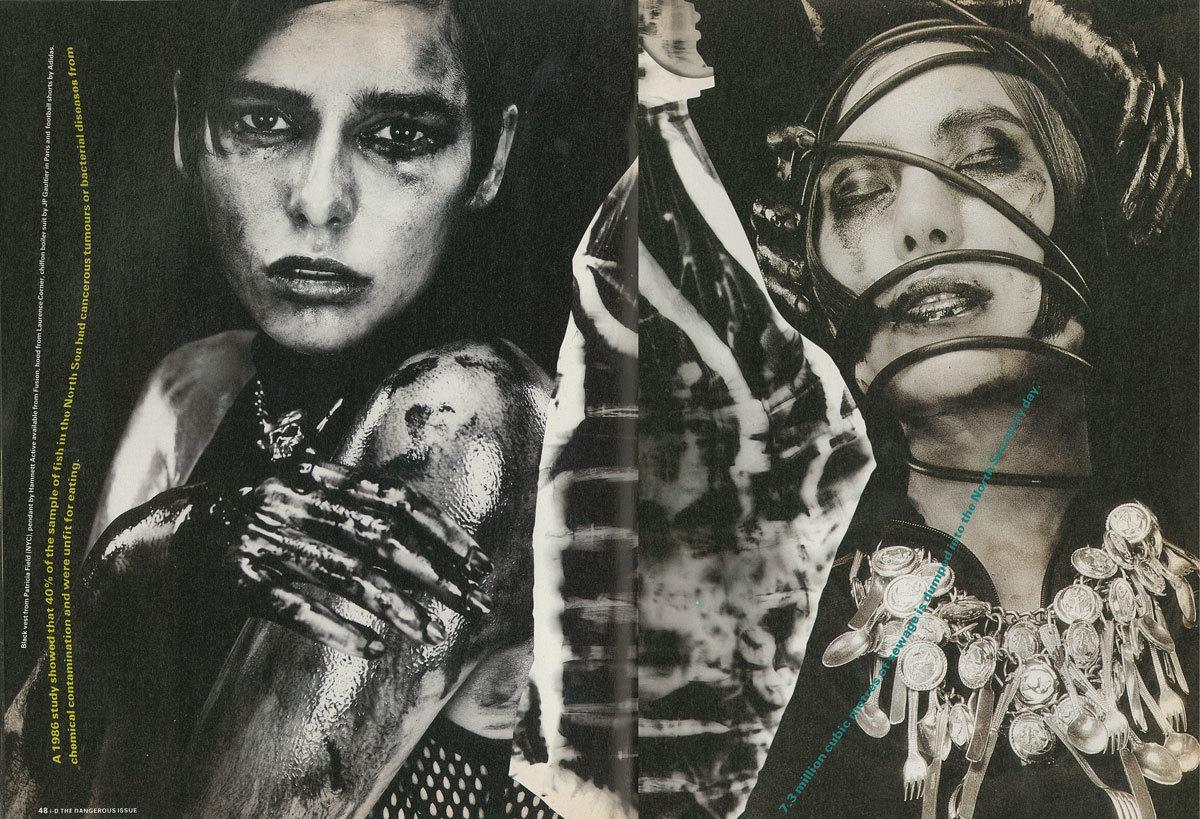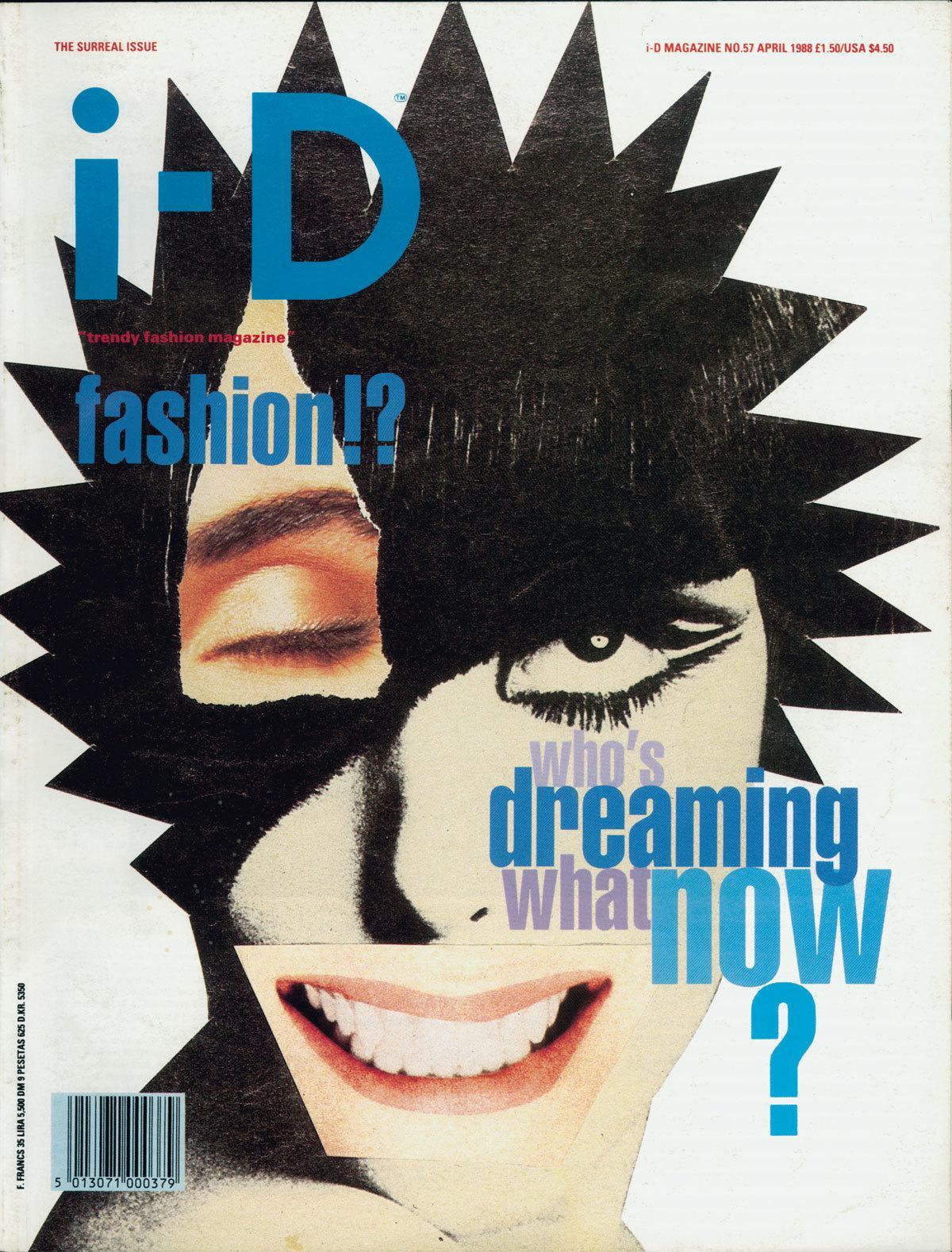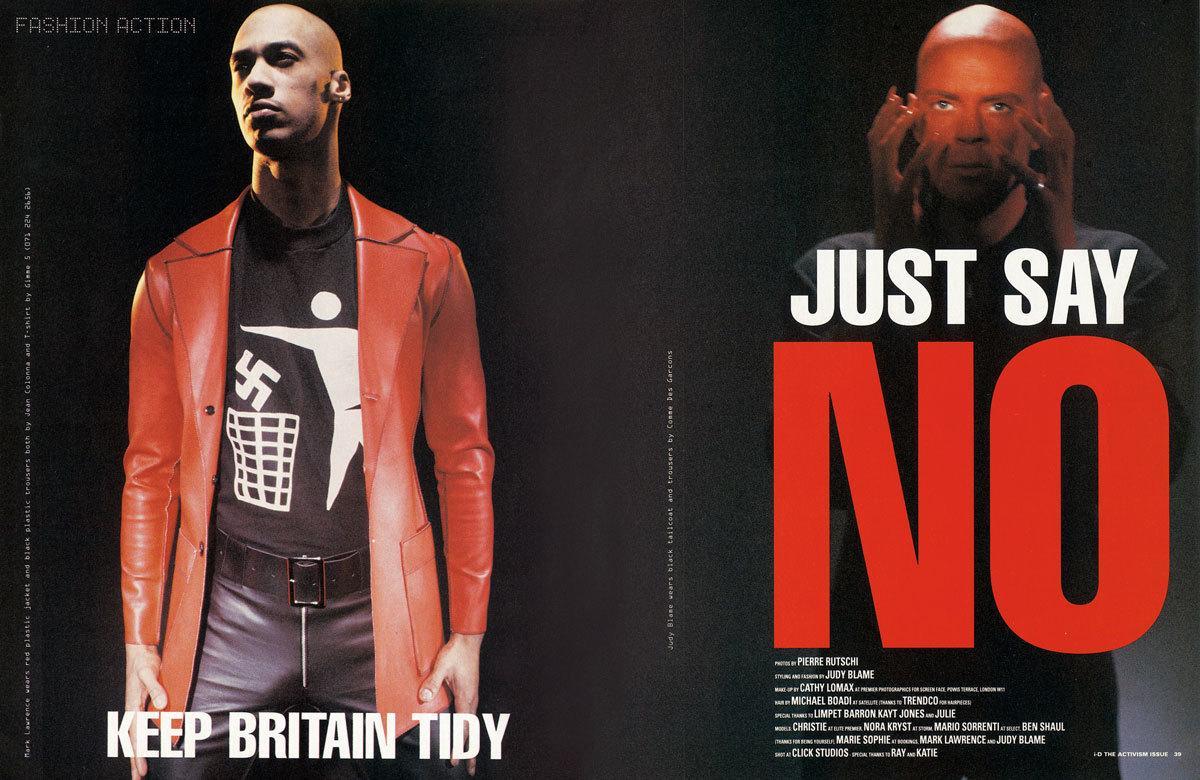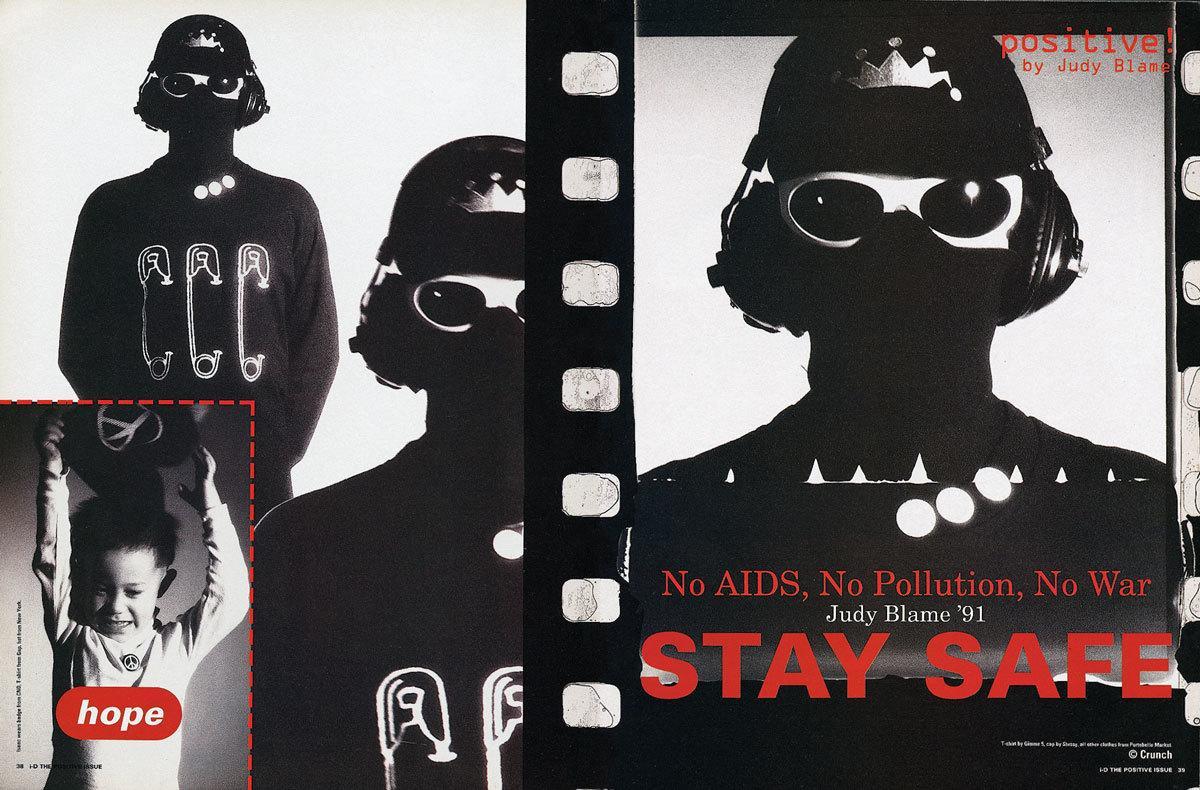Terry Jones: Your memory’s probably going to be better than mine, Judy. When you look back over your work, is there one thing in particular that stands out?
Judy Blame: Oh, I’ve found some funny things for this exhibition, Terry… Looking back on it all and just going, “Oh, my god.” Where’s the Pollution one? [Riffles through archive]. Here it is.
It was such great story, wasn’t it?
Do you know what makes me laugh about it? You’d never get a credit like that in the same room these days! Nick Knight did the prints, Jean-Baptiste Mondino did the pictures, Craig McDean did the still lifes… You’d already commissioned the thing about what was happening to the water and then the Exxon disaster happened, didn’t it? And it was just one of those last minute things we did in fashion week. The girls were coming in and we were covering them in baby oil and paint and they were going, “I’ve actually got a show in a minute!” We had to hose them all down! That’s why I did it too. I thought, if I’m asking the girls, I’ve got to do it as well!
It’s a great collaboration. I’m sure you could pull out every story and find something in there.
Well, you let me do an idea that wasn’t really a fashion idea and present it on a fashion page! And i-D were the first ones to do that, really. I mean, the brilliant thing that Mondino understood was, when I said pollution, he knew the only way we were going to get away with it was to actually make it really sexy and attractive. Because it wasn’t an attractive idea. So we really went out of our way to make it shiny and sexy and it just clicked on that one.
And getting the expression on the girl too. The strength in the wink and the pose was really emotional. How did you manage that?
Well, I think she was saying, “You swine, Judy Blame, for covering me in all that paint!” They weren’t happy the girls. That’s why I said, “Right, I’d better do it.”
There must be a huge number of people that are gonna join or come together for this exhibition?
Well, the ICA has asked people that I’ve known over the years, like Peter Saville, Malcolm Garrett, Linder Sterling, John Maybury to contribute. They’ve managed to get a Derek Jarman out of Derek Jarman’s estate. A Trojan painting… But you know how I keep in touch with everyone now? On Instagram. Because I’m shameless. I’ll post a lot of old images… So we all keep in touch.
And the Brazilians?
Yeah, we still keep in touch. I haven’t been back in about six years but Instagram is great, because they’re really into that. Actually, the first time I went to Brazil, I went out to a nightclub and this quite famous Brazilian designer came up to me and went, “Just got to say, I know you’re Judy Blame and this shoot [Pollution story]… I was living in the middle of nowhere in Brazil. It made me want to become a fashion designer.” And that was the thing. I don’t know how he got hold of i-D, but it was the one thing that made him… Go. I was thinking, god, I’m in the middle of Brazil, in the middle of a nightclub, and someone’s come to me and said that issue changed their life. It was quite funny… I mean, of course, I was rotten about it.

I think that was always the satisfying part with i-D. Jeremy Scott, same story.
But they reference… Like The Scarlett Issue. A lot of people reference that. Is it because you just let us do it and you listened to us when we were, “Terry, Terry, look at this!”?
It was definitely the idea of getting as much creativity in there. And I was probably the only person that would put up with divas.
Thanks!
No, I think it was the idea of having you involved in the layout and pushing at what’s possible. And particularly with you, your collages were so brilliant.
You actually let me put one on the front cover! I couldn’t believe it.
I don’t think I’ve got that one.
You haven’t got it… Is Terry going to nick my copy?
It’s definitely a rare one!
I mean, that’s what I want some of this show to illustrate and why I wanted to talk to you… The way we put it together was with things, you know what I mean? I’m not criticizing the screen, I realize times change, I’m not stupid. But there are other ways.
Well, everything you did was physical. Everything. You would salvage stuff that people threw away. And those notebooks you did, those Salvage Notebooks, were brilliant.
I’ve still got them all.
I think that’s the biggest difference, from the beginning of my career, chopping the space up and doing the letters by hand… With the computer, everything became snapped to grid and whoever was in the art department would have to spend hours moving stuff because I’d always want to shift it a millimeter out!
You did something with Dylan [Jones], a funny talk recently. I did one the season before and ours was people that used machines and people that didn’t. The audience were very machine-based and this kid asked me something and I said, “Yes, but have you ever had the pleasure of physically making something?” And she couldn’t answer my question! She’d never physically made anything. She’d only done it on a screen.
And the great thing about physically making something is that you can’t go back! You can’t give yourself a thousand options. That’s why I give my granddaughters fountain pens. Because all the crossings out and stuff like that; they’re part of it. You know, I love people who make-up words or who misspell.
Or when they’re children and they do the letters the wrong way round.

Totally. And mixing the capitals and the lower case. You can’t teach it, you can only experience it… The thing that will be interesting for the show is how you bring that aspect to it.
Well, I do actually want people to be able to come in as kids, through to old people, like my age and beyond. Because it’s funny… I noticed, especially when I was in Dover Street and Rei [Kawakubo] and Adrian [Joffe] let me have stuff there. I actually found out the age range of the people that were buying it went from young people right through to quite old people.
Are you showing your scarfs?
Yeah. It includes everything. It’s really quite paper, glue, and scissors, right through to the end. Because people don’t really do it like that anymore, so I really want it to be that, kind of, piece of education. Here are the ideas books… And here’s a badge I made out of a shopping list… And here’s a penny broach and a post sack jacket that ended up going down a Louis Vuitton catwalk because Kim Jones made it in cashmere, you know? That’s what they always used to say at Louis Vuitton. It was, “Where is Judy?” and I’d be with the old ladies in the white coats watching them make something. “Where’s Judy gone again, he’s supposed to be here? Oh, he’s in the atelier room with Mrs Such and Such.”
Do you still have your team?
Not so much at the moment. We don’t make enough stuff. We’ve been quite busy… They’ve made me a legend or a “Leg End” as I like to say so it’s been quite time consuming with all these shows and sorting it out.
But you’re an inspiration now, Judy.
I still make things and I will always make things because that is my roots, you know? From making one simple thing can lead on to so many others that, you know… All these editorials. It started with a paper bag, really, and then we bumped into Christopher Nemeth and John Galliano and off we went.

